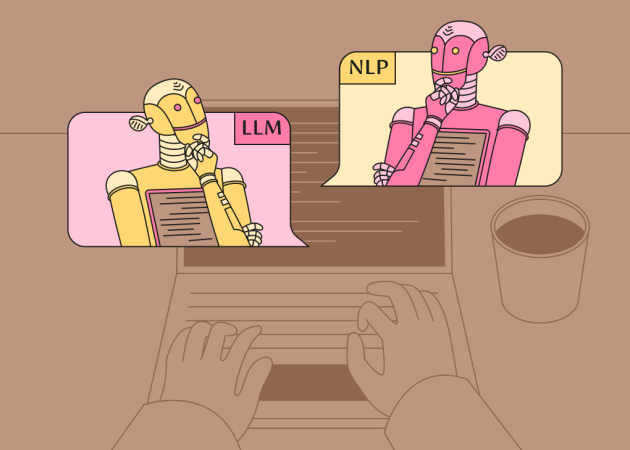
Choosing the Right Cybersecurity Vendor for Your Business: Expert Guide
Contents
Contents
The stakes for fast and reliable cybersecurity to protect your organization’s infrastructure, people, and bottom line have never been higher, given that cyber attacks now happen every 11 seconds, and the average cost of a data breach topped US$4.88 million (IBM). Selecting the right cybersecurity partner is especially critical when you’re scaling operations or managing sensitive industry-specific data. With this guide, we hope to help you better navigate the current cyber threat landscape and get actionable criteria for shortlisting a cybersecurity vendor that meets your operational and compliance needs.
Understanding Cyber Threats and Countermeasures
An attack on Change Healthcare in February this year that impacted over 100 million Americans stands as one of the largest data breaches in history. Over 4TB of highly sensitive data were exposed, including PIIs of active US military/navy personnel, medical and financial records, and phone numbers, as well as source code for Change Health solutions. Legal repercussions continue as lawsuits pile up against the company. Understanding how the breaches happen and what countermeasures can be taken is crucial in protecting organizations and individuals from cyber threats.
- Ransomware and Malware
Ransomware encrypts your data and demands a ransom to restore access, while malware interferes with systems or steals information. Exploitable vulnerabilities (discoverable using OSINT methods), leaked credentials, misconfiguration of MX servers, and open access points (e.g., unprotected RDP/SMB ports) are red flags that could put the company at risk.
One of the alarming trends is the rapid development of a global ransomware ecosystem, where companies get victimized by multiple criminal groups, with an increasingly smaller time gap between the attacks. Nearly 4,900 companies were affected by ransomware attacks between May 2023 and May 2024. Among them, healthcare systems are common targets due to their reliance on timely access to data and the highly sensitive nature of medical records.
Consider looking for the following roles and services when selecting a cybersecurity vendor to protect against ransomware:
| Competence/Service | Description | Competence/Service | Description |
| Managed Detection and Response (MDR) | Proactive monitoring and response services that detect and mitigate ransomware threats in real-time, often through a 24/7 Security Operations Center (SOC) | Vulnerability Management Services | Experts who proactively identify and remediate software and system vulnerabilities to close entry points for ransomware. |
| Incident Response Teams | Dedicated specialists who handle ransomware incidents, providing containment, eradication, and recovery strategies when an attack occurs. | Network Security Services | Teams that implement advanced firewalls, network segmentation, and intrusion prevention systems (IPS) to stop ransomware from spreading within an organization. |
| Endpoint Detection and Response (EDR) | Specialized teams managing EDR solutions that monitor and secure endpoints against malware and ransomware intrusions. | SIEM (Security Information and Event Management) Services | Teams managing SIEM platforms to centralize, analyze, and respond to security alerts, providing visibility into potential ransomware activity. |
| Backup and Disaster Recovery Services | Vendors that offer automated, secure backups and disaster recovery solutions, ensuring data can be restored without ransom payments. | Compliance and Regulatory Experts | Specialists that ensure ransomware response plans align with legal and regulatory requirements, such as GDPR or HIPAA, to avoid penalties after an attack. |
| Penetration Testing Services | Security experts conduct regular penetration testing to identify vulnerabilities that could be exploited by ransomware. | Access Control and Privileged Access Management (PAM) | Specialists who implement solutions to control access to sensitive systems, reducing the risk of ransomware spreading through compromised accounts. |
| Threat Intelligence Services | Teams that track ransomware groups and their tactics, providing actionable intelligence to stay ahead of emerging threats. | SOC-as-a-Service | Outsourced SOC teams that provide comprehensive ransomware monitoring, detection, and response for companies lacking in-house capabilities. |
| Security Awareness Training Programs | Tailored training options for employees on recognizing and avoiding phishing attempts and other ransomware delivery methods. | Forensic Analysis Teams | Specialists who investigate ransomware incidents to determine the root cause and develop future prevention strategies. |

- Phishing and Social Engineering
Social engineering is nothing new, but it has been involved in up to 98% of cyber incidents and is the most common entry point for ransomware attacks. Alongside traditional phishing attacks on employees, more sophisticated tactics like spear phishing (targeting a specific group of people, organization, or individual) and whaling (aimed at high-profile executives dubbed as “whales”) are on the rise.
The rise of messaging apps like Telegram, WhatsApp, and Slack has fueled the growth of SMS phishing (“smishing”). Similarly, voice phishing (“vishing”) gained attention after the 2020 Twitter hack. Another method, SIM jacking, involves scammers impersonating customers to transfer a victim’s phone number to a new SIM card and get access to the phone’s content if successful.
As fraudsters continuously refine their tactics to extract sensitive information, your cybersecurity strategy must evolve, too. The following roles and competencies are essential for staying ahead:
| Competence/Service | Description | Competence/Service | Description |
| Security Awareness Training Programs | Tailored training programs to educate employees on recognizing and avoiding phishing and social engineering attempts. | Threat Intelligence Services | Teams that gather intelligence on phishing trends and provide actionable insights to enhance defenses. |
| Phishing Simulation Services | Simulated phishing attacks to test employee awareness and improve organizational readiness against real attacks. | Anti-Phishing Tools and Plugins | Tools that integrate with email platforms to identify and neutralize phishing attempts. |
| Email Filtering and Threat Detection | Advanced email filtering solutions to detect phishing emails and block them before they reach employees. | Forensic Analysis for Social Engineering Attacks | Experts who investigate social engineering attacks to uncover methods and strengthen future defenses. |
| Advanced Threat Protection (ATP) | Comprehensive tools to detect, analyze, and respond to advanced threats, including phishing campaigns. | Social Engineering Risk Assessments | Assessments to identify vulnerabilities to social engineering within an organization. |
| Incident Response Teams for Phishing Attacks | Specialized teams that respond to phishing incidents, containing and mitigating damage quickly. | SIEM (Security Information and Event Management) Services | Platforms that centralize security alerts and detect phishing-related anomalies in real time. |
| Multi-Factor Authentication (MFA) Implementation | Implementation of MFA to secure accounts and reduce the risk of unauthorized access through stolen credentials. | Dark Web Monitoring Services | Monitoring of the dark web for compromised credentials or information used in phishing schemes. |
| Identity and Access Management (IAM) Solutions | Solutions to manage and restrict access to sensitive systems, ensuring users have the right permissions. | Zero Trust Architecture Implementation | Design and implementation of Zero Trust frameworks to minimize trust relationships exploited in social engineering attacks. |
- Supply Chain Attacks
Remember the CrowdStrike incident that disrupted millions of Windows-based systems worldwide? This massive IT outage affected around 8.5 million devices back in July, highlighting the severe risks associated with supply chain vulnerabilities and large-scale IT disruptions.
Targeted attacks exploit less secure links within a supply chain to compromise a larger organization. By infiltrating third-party vendors or software providers, attackers gain access to the primary organization’s systems. Such attacks can lead to widespread disruptions and data breaches, affecting multiple organizations simultaneously.
Look for the following key competencies and services for supply chain security to mitigate risks and protect your business continuity:
| Competence/Service | Description | Competence/Service | Description |
| Third-Party Risk Assessments | Vendors should offer thorough assessments of suppliers’ and partners’ cybersecurity measures, focusing on compliance with standards like ISO 27001 and other relevant frameworks. | Data Encryption and Protection | Implementation of encryption protocols to protect sensitive data throughout the supply chain, ensuring it is secure during storage and transmission. |
| Compliance with Security Standards | Vendors should demonstrate expertise in implementing and maintaining compliance with frameworks like ISO 27001, Cyber Essentials, and region-specific regulations. | Employee Training on Supply Chain Threats | Comprehensive training programs for employees, focusing on supply chain-specific threats, phishing recognition, and reporting suspicious activities. |
| Supply Chain Risk Management | Teams that specialize in risk identification, assessment, and mitigation across the supply chain, including vulnerabilities posed by third-party vendors and contractors. | Security Audits and Gap Analysis | Services that conduct detailed internal and external audits to identify security gaps within the supply chain and recommend actionable improvements. |
| Contractual Security Oversight | Services to help businesses draft and enforce contracts with specific cybersecurity requirements, incident response procedures, and compliance penalties. | AI and ML-driven Threat Detection | Use of AI and machine learning tools to enhance threat detection, automate responses, and identify anomalies across supply chain operations. |
| Performance Monitoring and Auditing | Regular security audits and ongoing monitoring of third-party security performance to ensure continued compliance and identify emerging risks. | Supply Chain-Specific Multi-Factor Authentication (MFA) | Tailored MFA solutions for securing access to supply chain management systems and critical vendor interactions. |
| Incident Response Planning and Execution | Expertise in developing and executing robust incident response plans tailored to supply chain breaches, including clear procedures for communication and containment. | Supply Chain Incident Reporting Systems | Implementation of systems that streamline incident reporting and communication with partners during security breaches. |
| Threat Intelligence Services | Continuous monitoring of emerging supply chain threats and attackers’ methods, providing actionable insights to strengthen defenses. | Cultural and Board-Level Engagement | Vendors that encourage a security-first culture through board-level engagement, fostering awareness, and promoting best practices across the organization. |

- Cloud Security Risks
With the increasing adoption of cloud services, proper security configurations are vital to prevent data leaks and maintain operational resilience. A Trend Micro 2024 report revealed that 42% of organizations experienced security incidents related to public cloud usage. The top five cloud security threats in 2024 include:
- Misconfiguration and inadequate change control
- Identity and access management
- Insecure interfaces and APIs
- Inadequate selection/ Implementation of cloud security strategy and
- Insecure third-party resources.
A trusted cybersecurity provider will help you develop and implement a proper cloud security strategy and mitigate risks from misconfigurations and third-party integrations. Areas of expertise for comprehensive cloud security include:
| Competence/Service | Description | Competence/Service | Description |
| Cloud Security Posture Management (CSPM) | Expertise in identifying and remediating misconfigurations in cloud environments to prevent vulnerabilities. | Third-Party Risk Assessments for Cloud Integrations | Evaluating the security of third-party tools and services integrated with your cloud environment to prevent supply chain vulnerabilities. |
| Identity and Access Management (IAM) | Implementation and optimization of IAM solutions to enforce least-privilege access and secure sensitive resources. | Disaster Recovery and Backup Services | Services tailored for cloud backup and disaster recovery to guarantee business continuity during a cyberattack or outage. |
| Zero Trust Architecture Implementation | Design and deployment of Zero Trust models to reduce risks by requiring verification at every access point. | Security Monitoring and Logging | Deployment of a unified logging and monitoring system to observe and evaluate actions within the cloud infrastructure |
| Data Encryption and Protection | Secure in transit and at rest data encryption to ensure compliance and prevent unauthorized access. | Application Security Testing for Cloud Apps | Regular testing of applications hosted in the cloud to identify and fix vulnerabilities before exploitation. |
| Cloud Compliance and Governance | Assistance in aligning cloud practices with regulatory requirements like GDPR, HIPAA, or ISO 27001 and creating audit-ready documentation. | Cloud-Native Firewall and WAF Management | Deployment and management of cloud-native firewalls and Web Application Firewalls (WAF) to protect against unauthorized access and attacks. |
| Multi-Cloud Security Expertise | Proficiency in securing diverse cloud environments (e.g., AWS, Azure, Google Cloud) to maintain consistent protection across platforms. | AI-Driven Threat Detection and Response | Use of AI tools to identify patterns, predict threats, and automate responses to emerging risks in cloud environments. |
| Threat Detection and Incident Response for Cloud | Real-time monitoring and rapid response to cloud-based threats, leveraging advanced analytics and automated tools. | Access Control for Hybrid Environments | Solutions to manage access securely in hybrid cloud setups, ensuring seamless integration between on-premise and cloud systems. |
| Secure DevOps Practices (DevSecOps) | Integration of security practices into the development lifecycle to ensure applications deployed in the cloud are secure by design. | Training on Cloud-Specific Security Best Practices | Employee training programs focused on secure cloud usage and recognizing cloud-specific risks, such as misconfigurations and phishing targeting cloud apps. |
- IoT Vulnerabilities
Estimates reveal there are between 15 and 19 billion Internet-connected devices, including consumer electronics, smart home appliances, industrial equipment, healthcare devices, and more. Unfortunately, many IoT devices lack the robust security features needed to protect against modern cyber threats, exposing organizations to significant risks. The main types of vulnerabilities include:
- Unpatched software and firmware: Outdated or unpatched firmware remains a common issue, as seen in the 2024 AVTECH IP camera breach, where attackers exploited a years-old vulnerability to spread malware.
- Misconfigurations: Improperly configured devices are another major risk. The Matrix botnet incident demonstrated how attackers can exploit misconfigured IoT devices to launch large-scale DDoS attacks.
- Lack of security features: Many IoT devices do not include basic protections like strong authentication protocols or encryption. This gap was evident in the Raptor Train botnet, which compromised over 260,000 networking devices by exploiting these deficiencies.
To mitigate these vulnerabilities, organizations must implement timely firmware updates, ensure proper device configuration, and segment IoT devices within their networks. That’s where a cybersecurity vendor can help through tailored IoT security solutions built upon the following services and expertise:
| Competence/Service | Description | Competence/Service | Description |
| IoT Device Security Assessment | Comprehensive evaluation of IoT devices to identify vulnerabilities and ensure compliance with security standards. | Threat Detection and Response for IoT Ecosystems | Real-time monitoring and rapid response to threats targeting IoT networks and devices. |
| Secure Firmware and Software Updates | Expertise in implementing secure over-the-air (OTA) updates to patch vulnerabilities and maintain device security. | IoT-Specific Data Encryption | In-transit and at-rest data encryption solutions to ensure the security of sensitive information processed by IoT devices. |
| Network Segmentation for IoT | Design and deployment of network segmentation strategies to isolate IoT devices and prevent unauthorized access. | Secure Configuration Management | Services to harden IoT device configurations, minimizing attack surfaces. |
| Identity and Access Management (IAM) for IoT | Implementation of secure authentication mechanisms and role-based access control for IoT devices. | Compliance with IoT Security Standards | Guidance on meeting regulations like GDPR, NIST IoT guidelines, or ISO/IEC 30141 for IoT ecosystems. |

Understanding Your Business Needs and Risks
Selecting the right cybersecurity vendor begins with a thorough understanding of your unique business requirements. Start by evaluating:
Compliance Requirements
In regulation-heavy industries like healthcare and finance, failing to meet compliance standards like HIPAA or PCI DSS can entail severe financial and reputational penalties. HIPAA violations, in particular, can cost up to over US$2 million per violation, so it is imperative to choose a vendor experienced in navigating these frameworks.
Data Sensitivity
Identify and prioritize the data you need to protect. The cost of intellectual property (IP) theft, for example, has risen by 36% to US$1.1 billion, making it critical for manufacturers and tech companies to implement robust safeguards like encryption and access control systems.
Threat Landscape
Research the most pressing threats in your sector. If ransomware is a common issue, ensure the vendor has experience deploying preventive solutions such as regular backups and endpoint detection systems. Vendors experienced in addressing your specific threats are more capable of delivering tailored solutions.
Budget Alignment
Define your maximum cybersecurity spending early. Allocating 7-10% of your IT budget to cybersecurity is an industry benchmark. While a small business may opt for basic services like antivirus and firewalls, companies managing sensitive data or operating in high-risk sectors may need to invest even more to cover advanced threat detection tools and compliance audits. It is all about a trade-off between cost efficiency and comprehensive protection.
Assessing Vendor Expertise and Reputation
Give top priority to those vendors who have a history of positive reviews and high ratings, especially from organizations within your industry. A vendor’s expertise is the foundation of their effectiveness. Here’s how to assess it:
Certifications and Credentials
Look for ISO 27001, SOC 2, or CISSP badges. These certifications ensure adherence to global standards and provide peace of mind that the vendor understands best practices. For instance, a vendor who uses CISSP-certified professionals will be better equipped to design more secure architectures for complex environments.
Case Studies
Request case studies in as much detail as possible that demonstrate their ability to solve a particular challenge. They might have helped a retail chain to cut phishing incidents by 60% with multi-factor authentication and employee training; they could have secured IoT devices for a HealthTech company to meet HIPAA compliance or ensured PCI DSS compliance for a financial firm without operational disruption. This provides concrete evidence of the vendor’s experience and adaptability.
Customer Feedback
Platforms like Clutch, G2, Gartner Peer Insights, and Trustpilot present feedback from enterprises with similar needs in the most impartial way. Verified testimonials will help identify if a vendor resonates with your goals and priorities. Note the recurring themes that confirm responsiveness, technical expertise, and how their solutions provide a fix for specific pain points. Long-term reliability feedback — for instance, continuous support, adaptability to emerging threats, and compliance — gives a better understanding of their overall performance and trustworthiness.
Sustainability Focus
Choosing a cybersecurity vendor with a strong focus on sustainability ensures your security strategy is in line with environmental and corporate responsibility goals. Look for vendors whose infrastructure is energy-efficient, using green hosting and cloud solutions based on platforms committed to carbon neutrality and renewable energy, such as AWS, Microsoft Azure, or Google Cloud. The transparency in their sustainability reporting and accountability would serve as a good indication of the reliability of putting responsible practices into action.
Evaluating the Range of Services
A robust vendor should offer comprehensive services tailored to your business. Key areas to evaluate include:
Comprehensive Security Solutions
Beyond core services like network and endpoint security, check whether the vendor offers incident response, penetration testing, and advanced threat intelligence. Proactive threat hunting can identify vulnerabilities before they’re exploited. Refer to our detailed lists of countermeasures for various threat types as a guideline to identify the services most relevant to your specific needs.
Integration with Existing Infrastructure
Ask about implementation strategies. Can they integrate seamlessly with your cloud systems, legacy software, or third-party tools? Compatibility with your existing software environment is essential. A vendor offering middleware solutions or APIs can ensure their tools integrate smoothly with your infrastructure, reducing downtime and operational disruptions during implementation.
Employee Training Programs
Given how severely cyberattacks imperil business operations — especially in high-stakes sectors — more stringent security measures are vitally important. With human error accounting for 52-95% of security breaches, cybersecurity must become a core focus of employee performance. Prioritize vendors who offer customized security training or workshops to raise awareness and improve skills for both security teams and non-technical staff in identifying and preventing threats.

Evaluating Technology and Tools
Technology determines a managed cybersecurity provider’s ability to safeguard your company. Consider vendors who continuously invest in innovation and update their offerings to meet emerging cybersecurity threats. Factors to consider:
Tech Stack
A strong cybersecurity stack combines multiple tools and technologies for layered protection. Splunk and IBM QRadar for SIEM, CrowdStrike, SentinelOne, Microsoft Defender for EDR, and Recorded Future and FireEye for advanced threat intelligence are some of the industry standards. Frameworks such as OWASP guide secure application development, while compliance tools like C5, SOC 2, and DORA ensure adherence to regulatory standards. Cloud solutions from AWS, Azure, and GCP add scalability and resilience to modern cybersecurity infrastructures.
Innovation and Upgrades
Ensure the vendor actively invests in upgrades to match the fast-changing threat scene. Outdated tools can leave your organization vulnerable and exposed to emerging risks.
Integration with Existing Systems
Verify that the provider’s tools integrate seamlessly with your current IT infrastructure to minimize disruption and enhance efficiency. By selecting a vendor committed to leveraging state-of-the-art technology, you can ensure comprehensive and up-to-date protection against evolving cyber threats.
Assessing Scalability, Flexibility, and Long-Term Collaboration
As your business grows over time, your cybersecurity needs will evolve. From a strategic perspective, scalability and flexibility are critical factors long-term. Key questions to ask a potential vendor:
- Can they scale their services as your business expands? Ensure the provider can adapt to your growth, whether it’s adding endpoint protection, expanding cloud security, or integrating advanced features.
- Are they flexible in terms of cooperation models? Look for vendors with multimodal cooperation options, such as assembling dedicated teams for long-term collaboration, augmenting your existing team with specialized experts, or providing project-based solutions for specific challenges.
- Can they address your industry-specific requirements? If your business operates in a high-stakes industry like healthcare, finance, or energy, choose a vendor with proven expertise in your field. Niche expertise ensures the vendor can deliver tailored solutions, be it securing IoT devices in energy grids, protecting patient records in healthcare, or ensuring compliance with PCI DSS for financial systems.
Long-term collaboration plays an important role in cybersecurity. Ongoing support from a proactive partner will help your organization prepare for and adapt to new challenges, while the guidance and updates they provide will keep your defenses strong. This strategic relationship engenders trust, operational continuity, and a resilient security posture in this ever-changing threat landscape.
Reviewing Response Time and Support
Quick response times and dependable support are critical for mitigating damage during a cyber incident. A provider’s ability to respond promptly and offer ongoing assistance is a key factor in maintaining your organization’s security posture. What to look for:
- Response time: Ask potential vendors about their average response times for different types of incidents. Ensure they provide a clear Service Level Agreement (SLA) outlining response commitments.
- 24/7 support: Cyber threats can occur at any time. Vendors offering round-the-clock support ensure you’re protected during emergencies.
- Dedicated support team: A dedicated team familiar with your business’s unique needs provides personalized and efficient assistance.
- Long-term collaboration: Choose a partner that offers regular support to help your organization adapt to new threats and maintain security measures over time.
Strong support capabilities minimize downtime and enhance your ability to respond effectively to incidents, safeguarding your operations and reputation.
Evaluating the Approach to Compliance and Regulatory Requirements
Compliance with industry regulations remains part and parcel of every cybersecurity strategy. Noncompliance invites large fines, legal complications, and reputational damage. Choosing a provider with demonstrated expertise in regulatory requirements ensures your business remains protected. Key considerations include:
- Understanding of relevant laws: Whether GDPR, HIPAA, or CCPA, the vendor must demonstrate expertise in helping clients meet complex legal obligations through tools like automated compliance reporting to ensure your systems align with legal standards.
- Ongoing compliance support: Regulations evolve, requiring continuous monitoring and updates. A provider offering ongoing compliance services can help your business stay ahead of changes.
- Audit assistance: For businesses subject to regular audits, having a vendor that supports the audit process adds immense value by streamlining documentation and processes.
- Transparency in reporting: Verify whether the provider delivers detailed compliance reports. Transparency in reporting builds trust and demonstrates accountability.
By partnering with a vendor well-versed in compliance, you reduce risks associated with regulatory violations and maintain operational integrity.
Considering Cost and Value
Cost is an important factor when choosing a cybersecurity provider, but it should be weighed against the value they offer. A cheap solution that fails to provide adequate protection can result in higher costs due to breaches or insufficient coverage. Factors to consider may include:
- Total cost of ownership: Look beyond upfront costs to include expenses for updates, support, scalability, and long-term maintenance.
- Value for money: Assess the range and quality of services included. Does the provider’s offering address all your security needs comprehensively?
- Long-term investment: Strong cybersecurity measures are an investment that prevents costly breaches, downtime, and regulatory fines in the future.
An ideal provider balances cost-efficiency with comprehensive protection, offering solutions tailored to meet your budget and security priorities.
Key Trends and Challenges in Today’s Cybersecurity
Due to technological advancement and new threats, cybersecurity has become increasingly sophisticated. AI, automation, and cloud solutions have emerged as key tools in the fight against cyberattacks while simultaneously presenting new challenges for organizations to address.
Artificial Intelligence and Automation
By analyzing current patterns and historical data, AI systems can identify subtle anomalies and predict potential security breaches before they occur. However, the rise of generative AI has created new security challenges, with cybercriminals leveraging sophisticated tools for malicious purposes, including deepfakes, voice cloning, and AI-powered social engineering attacks. Recent surveys indicate that 52% of CISOs and CIOs expect catastrophic cyberattacks using GenAI within the next 12 months, driving increased investment in both AI capabilities and governance frameworks.
Cloud Security and Zero Trust Architecture
The accelerating shift to cloud computing has fundamentally changed security approaches. With cloud misconfigurations accounting for 23% of breaches in 2024, organizations increasingly rely on automated assessment tools and continuous monitoring. The Zero Trust framework, operating on a “never trust, always verify” principle, has become essential for modern security architectures. Through micro-segmentation and continuous verification, organizations can better contain potential breaches and protect sensitive resources across cloud and hybrid environments.
Upskilling and Talent Development
The increasing sophistication of cybersecurity threats has made talent development a critical strategic priority. Organizations must balance rapid workforce upskilling with the optimal mix of in-house capabilities and managed services. The importance of talent strategy becomes particularly evident in the context of security breaches. Organizations that have experienced cyber breaches exceeding US$1 million demonstrate a heightened awareness of talent’s critical role, with 52% ranking competitive talent acquisition among their top three priorities.
As the human element remains the most vulnerable link in the cybersecurity ecosystem, fostering a culture of security awareness is pivotal to preventing attacks of any kind. We already stressed the role of employee training, but management should also proactively participate in security and compliance programs and embed cybersecurity checkpoints into daily processes.
On a concluding note
Success in modern cybersecurity requires organizations to balance technological capabilities with strong governance frameworks and skilled personnel, ensuring both effective protection and responsible implementation of advanced security measures. At Beetroot, we provide tailored cybersecurity solutions designed to protect businesses across diverse industries. We are committed to helping you navigate today’s complex digital landscape and equipping your teams with critical cybersecurity skills through our Academy programs. Contact us today to explore how we can support your cybersecurity needs, and let’s build a safer future together.
Subscribe to blog updates
Get the best new articles in your inbox. Get the lastest content first.
Recent articles from our magazine
Contact Us
Find out how we can help extend your tech team for sustainable growth.







